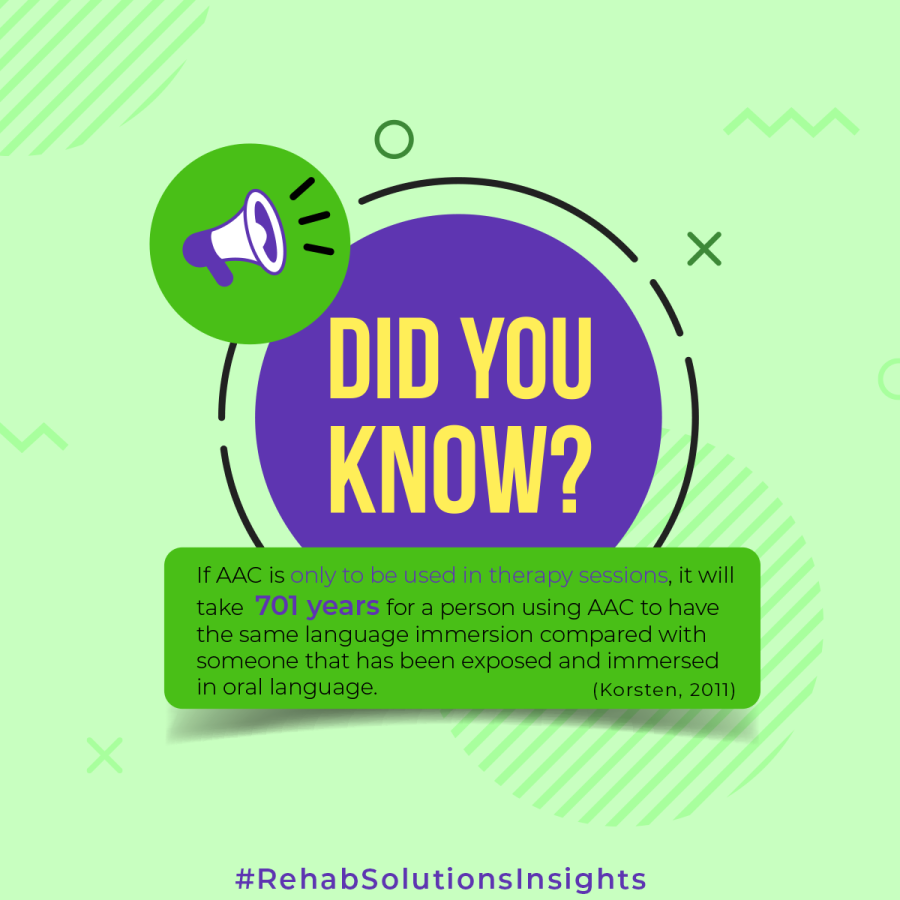Modelling AAC
In this post, we will explain and define what we mean when we use the term ‘modelling’ when speaking about alternative and augmentative communication (AAC). Simply put, modelling means pointing to the symbols on an AAC display as we speak to an AAC user while placing no pressure on them to respond or repeat what has been said.
Why model
Sometimes there can exist a misconception that an individual can be given a communication device and will immediately be able to use it to communicate with others. However, it’s important to note that for most people, language is learned through a lengthy process in which we hear thousands of words each and every day before there is an expectation of us responding. It’s the same for an AAC user learning to use their system who will most effectively learn to communicate using AAC by having this type of language shown to them, or ‘modelled’. Learning AAC is like learning a new language!
The evidence base supports this approach to learning to use AAC, and the use of modelling creates an engaging communication situation that leads to greater connectedness. For most of us, when we communicate with others we do so not only to exchange information but to connect with others. When expectations of response are placed on an AAC user before they are ready to communicate, this can lead to reduced social connectedness and engagement.
What we model
Language can be modelled on any AAC system including symbol picture displays, PODD books, and high-tech devices including iPads and eye gaze devices. By modelling language and communication to an AAC user we:
- Familiarise ourselves with the user’s communication system
- Show the AAC user how they can use their system to communicate with others
- Show the AAC user that we accept their communication
- Demonstrate what can be said, when and how
When we model
It can be tricky to get the hang of modelling, but it can help to embed modelling into everyday situations. This might be during mealtimes, when going for a walk, at bedtime or when doing a favourite activity. But any activity can be a great time to model.
How to model
The process of modelling involves pointing to the symbols for the keywords of what we are saying. It can be really beneficial to first become familiar with the system which is being used to make the process easier.
We might model:
- Observations relating to what we see, eg. ‘I can see that you’re eating your dinner’
- An encouraging phrase, eg. “Well done putting that away’
- A question, eg. ‘Do you want some more’.
Importantly, when we say all of these words, we only model the keywords on an AAC device. For example, when we say ‘I can see that you’re eating your dinner’, we might only model ‘I see you eating’ or when saying ‘Do you want some more’ we might model ‘you want more’.
The other thing to think about is modelling language that’s a bit more complex than what an AAC user can produce. This allows us to teach language which is one level up. So if an AAC user is creating one-word utterances, we might model a two-word utterance. Your speech pathologist will guide you through this as you’re getting used to it.
In summary, modelling is a way to teach an AAC user a ‘new language’ in a natural way that maintains the enjoyment and connection of communicating with others. When helping someone to learn AAC, model regularly, model without expectation and have fun!
Rehab Solutions Adelaide Team


